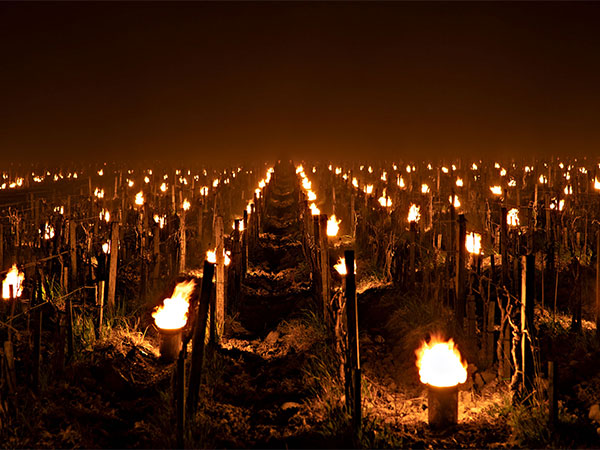

Photo by Enea Barbieri
Vineyards across much of France and Italy have been hit by devastating frost that may significantly impact wine production for the 2021 vintage.
Julien Denormandie, France’s Minister of Agriculture, told Radio France on April 9 that the government would implement an agricultural calamity regime, and that many portions of the country were faced with a completely exceptional situation. Reports from French winemakers indicate that damage thus far has occurred in Burgundy, especially Chablis, as well as Bordeaux, Champagne and the Rhône Valley.
Coldiretti, a large confederation of Italy’s farmers, cites sub-zero temperatures from the north to the south of Piedmont, with serious damage to fruit trees as well as to grapevines. The Veneto, Chianti Classico and Montalcino have suffered significant damage, according to Confagricoltura, the General Confederation of Italian Agriculture, which estimates losses in Italy’s agricultural sector at up to €1 billion.
Some producers point to warmer winter temperatures and earlier budbreak as a cause for the widespread damage, and they indicate a need to account for this going forward. Here are some reports from the field (in the winegrowers’ own words, lightly edited for clarity and brevity), which we will update as more information comes in.
ITALY – TUSCANY
Duccio Corsini—Principe Corsini; San Casciano, Val di Pesa; April 13
We in Tuscany were hit on Thursday the 8th of April in the early morning. The temperature at Villa le Corti was -5 Celsius. We kept prunings for this eventuality spread alongside the sangiovese vineyard; [that vineyard had been] hit in 2020 and in 2017. All very experimental, we turned on fires at 4:45 am and had spraying equipment operative to create some sort of forced ventilation.
It is early to count the damage, but we lost, so far, approximately 30 percent of sangiovese where we tried to protect it. In some other sangiovese vineyards not protected, [the damage is] greater than 50 percent. The Fico vineyard was safe; also colorino and merlot.
It is a different story in Maremma, [where the] merlot in Marsiliana was all lost.
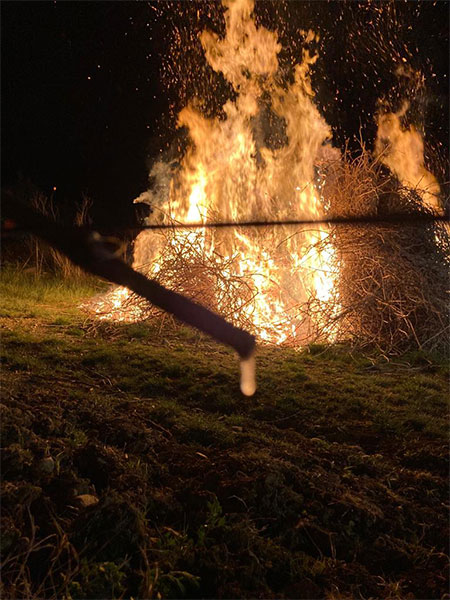

Damage from frost is becoming more common. We cannot think of this like a late frost; April 8 is early spring and it is possible. The problem is caused by mild and short winters where the soil does not freeze. The wake up [i.e., bud break] is earlier than in the past, having buds ready to go and opening new leaves.
Anyway, nature is a miracle and I hope for a better quality where damage was not total.
Marco Ricasoli—Rocca di Montegrossi; Gaiole in Chianti; April 13
The Sangiovese trained on guyot has been particularly hit, as the guyot-trained vines are ahead in the growth and the buds are already open. This is not the case with those vineyards trained on cordone. By now, most of my vineyards are trained to guyot, so the damage is remarkable. Depending on position and exposure of the different parcels in some vineyards there’s a damage of 80 percent buds burned by the frost. Other vineyards have less damage, so I believe I can estimate that an average of 50 percent of the buds were damaged.
Merlot, canaiolo, cabernet sauvignon and pugnitello vineyards are doing fine with very little damage to the buds which were still closed and therefore protected.
I did not and I could not take any measures. The reason is that with such cold temperatures (-5 to -7°C) there’s no fire or smoke that can effectively protect the vines. The only option would be to light many small fires, but this is doable only when you have a few hectares to protect.
It is not feasible when you have 10, or 15 or 20 hectares. You can’t really light hundreds and hundreds of fires.
I did pray, as this was the only thing I could do this time … but obviously it didn’t work. I suppose that God this time has more important things to think about … In any case, when you work in agriculture you know that this can happen and you can only accept this possibility, as it is not possible to control nature.
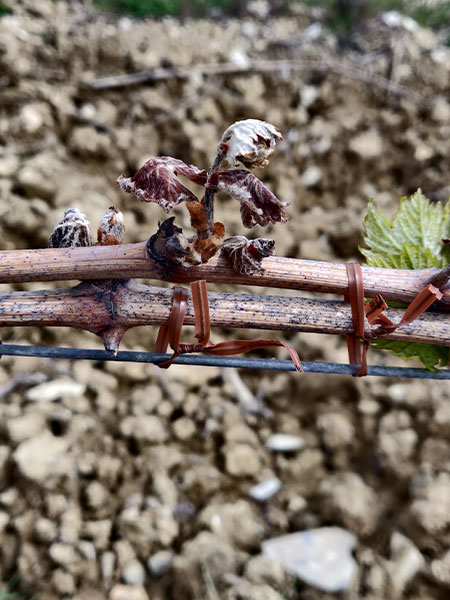

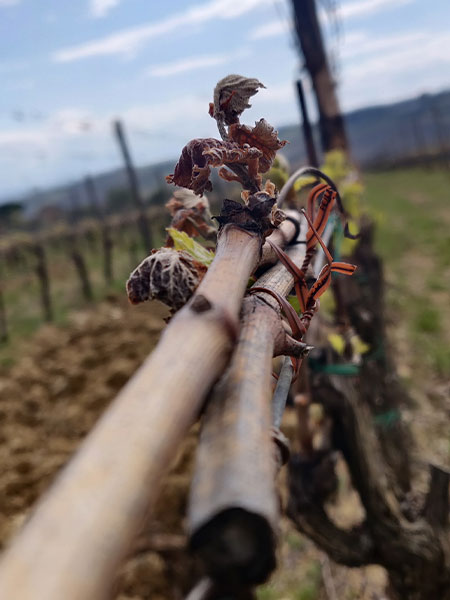

This is the worst frost I’ve seen in my vineyards since I started Rocca di Montegrossi, and tomorrow the forecast says that it’s going to be very cold again. Now that the plants are also wet with rain there’s a serious risk that a new frost could complete the work. We will be able to verify the real damages more precisely in a 10-14 days, when we will be able to see how deep the frost has ‘burnt’ the gems.
This is not a nice way to start the 2021 vintage …
Roberto Stucchi Prinetti—Badia a Coltibuono; Gaiole in Chianti; April 13
Unfortunately, we were hit by the frost pretty severely. We estimate that over 50 percent of the buds were damaged. Here it used to be a very rare occurrence so we don’t have a frost protection system in place. Like with other issues related to climate disruption, we might need to prepare for the future. We are having much earlier bud break which means we have a longer period when the frost can hurt us.
Tenuta di Trinoro; Val d’Orcia; April 15
During the nights of April 7th and 8th, the vineyards at Tenuta di Trinoro offered a moving sight: vine rows lit up in the thick of night with thousands of candles lined up and burning.
The whole winery team of 36 workers fought a wave of frost that had come down the mountain to threaten fragile buds just beginning to sprout; the team had already prepared and set 3.000 large candles made with buckets filled with wax, placed along the rows during the day, as is customary in many of the colder vineyards of northern Europe.
At Tenuta di Trinoro, operations started at around midnight, with careful monitoring of the falling temperatures, until fire had to be set to stacks of firewood piled around the vineyards; then the 3.000 candles were lit. This kept the air around the plants above 0° degrees, while all around the vineyards, temperatures as low as 4.5° below freezing point were registered.
In the morning, at 9:45, the team left, after 8 hours of frantic work against this spell of cold air. More nights like this are expected this year.
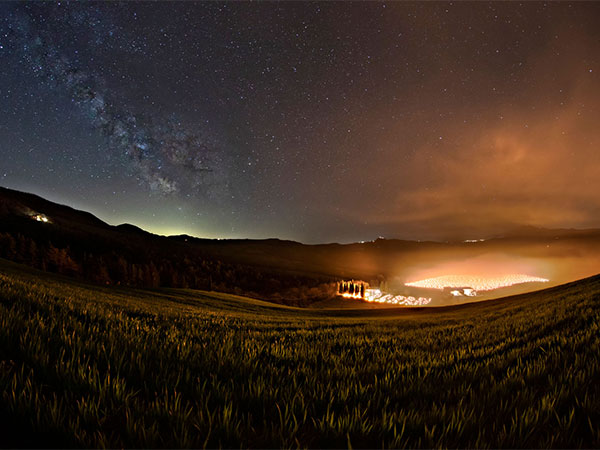

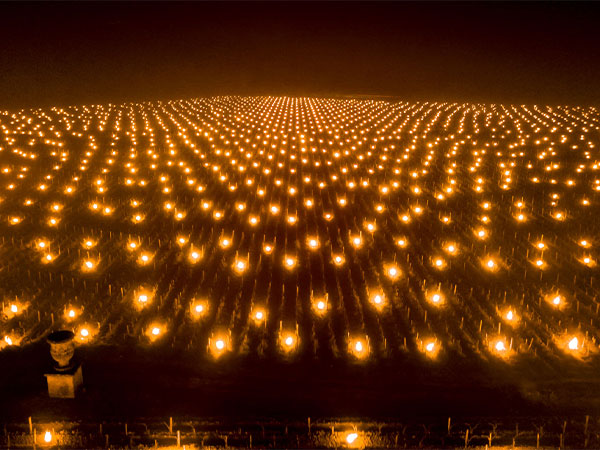

Photos by Enea Barbieri
ITALY – PIEDMONT
Nicola Oberto—Trediberri; La Morra (Barolo); April 12
In the early morning of April 7th, at around 6 a.m., an extremely cold wind and frost entered the valley of Rocche dell’Annunziata, thus causing a huge drop in temperature, down to -3° C. Unfortunately, our parcels within Rocche dell’Annunziata and Torriglione have been extremely affected and, so far, we can estimate a damage of 60 to 70 percent in Rocche and 85 to 90 percent in Torriglione. At least Berri hasn’t been touched at all.
This situation will definitely cause troubles for our winery in the near future, both on the business side and on our spirit. We will work with the likely scenario of not producing our Barolo Rocche dell’Annunziata 2021. Everything will now depend on the rise of bunches on the second buds of our old vines of nebbiolo.
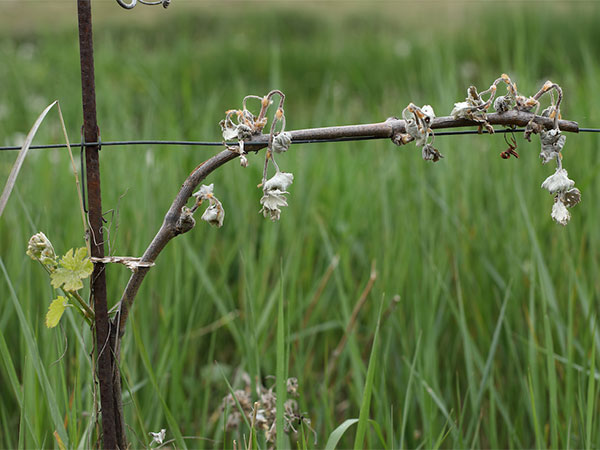

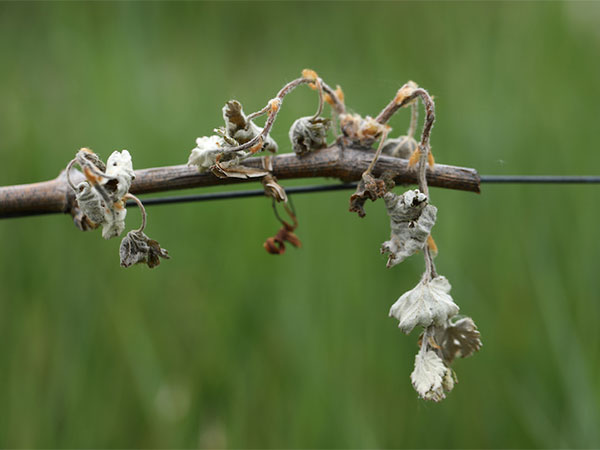

This is nature and this is the life of farmers, but this has never happened to our vineyards. My deepest feelings go to those producers in the world who have constantly experienced frost in the last vintages, or those who have been affected by other devastating casualties such as fires. In Barolo, we are still very lucky as this is the very first time with such a big trouble.
We won’t give up, and be sure we will do our best to focus on releasing the best 2018, 2019 and 2020 nebbiolo wines we are able to.
Fabio Alessandria—G.B. Burlotto; Verduno (Barolo); April 15
The years 2020 and 2021 seem to be really challenging for different reasons……
We’ll understand better the situation in the next weeks. As of today, I can tell you that it was not a disaster like in some other regions in Europe, but nobody in the village can remember a frost that damaged plants in the higher part of Monvigliero.
Air currents spread the cold air from the bottom of the hill to the top. It’s difficult to find plants completely affected but there are plants with some sprouts burnt. Anyway, until the flowering and fruit set we will not be able to understand the real damage.
I want to see my glass half full, and think that in some vineyards like Breri, Monvigliero and in a small part of Cannubi the yield will be lower and we’ll produce great wines! Vineyards like Rocche Olmo, Boscatto, Neirane and Castelletto in Monforte were totally not affected.
FRANCE – CHAMPAGNE
Jean-Baptiste Lécaillon—Louis Roederer; Reims; April 12
It is too early to assess the damage; we will know more next week. As you know, the Champagne region is used to these frosts! The real fight is remaining watchful and protecting our nursery’s massales selections against the frost—our House’s biodiversity treasure!
FRANCE – BORDEAUX:
Fiona Morrison—Le Pin, L’If & L’Hêtre; April 12
Pretty disastrous for [some growers in Bordeaux]. It is not over yet; another wave of cold weather coming tomorrow.
FRANCE – CHABLIS
Patrick Piuze; April 16
Regarding our frost period, this chapter seems to be over and while it is still difficult to predict our loss, we know that a minimum of 50 percent is lost.
Depending on date of pruning in the area and the végétal caracter, we are ranging from almost no damage to 100 percent.
We will wait until the vines start to grow to really see the damage. And, for now, we will work to protect and save what is left.
is the Italian wine editor at Wine & Spirits magazine.
This is a W&S web exclusive. Get access to all of our feature stories by signing up today.
















